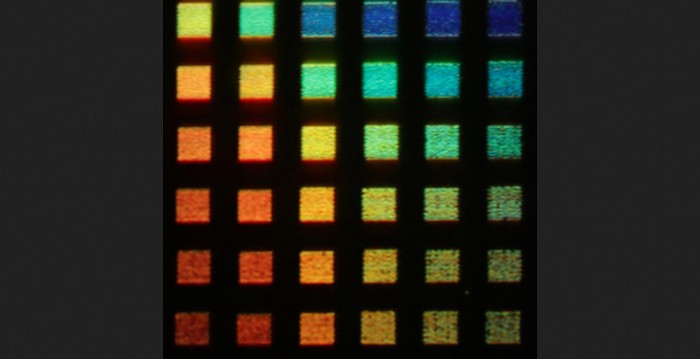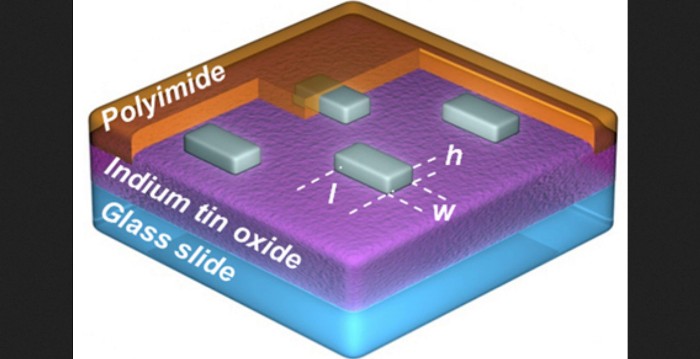New Full Color Display Technology to Mimic a Squid’s Skin Camouflage
![By Chris Frazee and Margaret McFall-Ngai [CC-BY-4.0 (http://creativecommons.org/licenses/by/4.0)], via Wikimedia Commons](https://techtheday.com/wp-content/uploads/2014/09/squid-skin-disguise.jpg)
By Chris Frazee and Margaret McFall-Ngai [CC-BY-4.0 (http://creativecommons.org/licenses/by/4.0)], via Wikimedia Commons
Previously, we wrote about a camouflage technology that copies a cephalopod’s disguise ability. As of the time that post was written, however, the technology was only limited to black and white or monochrome results. This time, a new full color display technology has been created and it is expected to be similarly capable of mimicking a squid or cephalopod’s ability to blend into its surroundings.
This new display technology has been published on the Proceedings of the National Academy of Sciences of the United States of America. The authors are from the Laboratory for Nanophotonics (LANP), Department of Chemistry, Department of Physics and Astronomy, and Department of Electrical and Computer Engineering of Rice University in Houston, Texas. These researchers include Jana Olson, Alejandro Manjavacas, Lifei Liu, Wei-Shun Chang, Benjamin Foerster, Nicholas S. King, Mark W. Knight, Peter Nordlander, Naomi J. Halas, and Stephan Link.
Vivid Colour Display
Researchers have created a breakthrough in color display technology as they attempt to develop a material that can emulate the camouflaging abilities of cuttlefish, octopuses, squids, and other cephalopods. They intend to manufacture a synthetic squid skin that is capable of “seeing” colors.
Nanotechnology is involved in the process. The researchers made use of aluminium nanoparticles to produce vivid red, blue, and green (RGB) colors – the basic colors needed and currently being used in modern displays. These are the same base colors used in today’s top LCD and OLED display panels. However, in this new color display technology, each pixel is composed of hundreds of aluminium nanorods, and each square pixel is five microns in size.
The researchers varied the length and spacing of these aluminium nanorods to create pixels that produce clear and excellent colors, which can be likened to what can be found in high definition LCD displays.
Using Aluminium Nanorods in Displays
The researchers have broken through the barrier that makes aluminium nanorods incapable of producing vivid and vibrant colors. According to Associate Professor Stephan Link, until now, the color tones emitted by plasmonic aluminium nanorods have been muted and washed out. With the results the Rice University researchers have achieved, it is now possible to fabricate vivid RGB displays using periodic areas of aluminium nanorods in each pixel.
Aluminium is more abundant than the chromatic materials typically used in most full color displays. It is also less expensive. Being able to use it for display manufacture is definitely an advantage. The research has also shown that the use of aluminium is compatible with complementary metal-oxide semiconductor manufacturing methods and is directly applicable to modern methods used in producing liquid crystal displays.
Squid Skin Capabilities
Aside from working to make use of aluminium nanoparticles in this new display technology, they have also inched closer to the creation of a viable squid-skin-like metamaterial that can see colors and automatically camouflage into its background.
Cephalopods don’t use their eyes to see their background and manipulate the pigments on their skin to create a camouflage. They just automatically change colors and patterns to blend with their surroundings. The Rice University researchers are attempting to emulate this ability.
As LANP Director Naomi Halas said, “Our goal is to learn from these amazing animals so that we could create new materials with the same kind of distributed light-sensing and processing abilities.” The study co-author added that “We know cephalopods have some of the same proteins in their skin that we have in our retinas, so part of our challenge, as engineers, is to build a material that can ‘see’ light the way their skin sees it, and another challenge is designing systems that can react and display vivid camouflage patterns.”
Halas and the rest of the “squid skin” research team are also working on materials and setups that will duplicate the automatic camouflage color and pattern transformations in cephalopod skins. In August, the team had already published a study on advanced materials centered on an aluminium-based CMOS-compatible photodetector technology for color sensing. This (the aluminium-based CMOS-compatible photodetector) is also the reason why the research team’s achievement in producing a vivid display out of aluminium nanorods is considered a breakthrough.
Summing It Up
A prototype of the intended squid skin metamaterial yet to be produced by the team. However, as mentioned above, notable advancements have been achieved especially with the use of aluminium nanorods in producing bright and vivid colors. Once the photodetection aspect gets viably developed, it won’t be long before a prototype of the advanced metamaterial can be demonstrated to the public.

